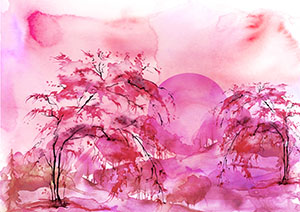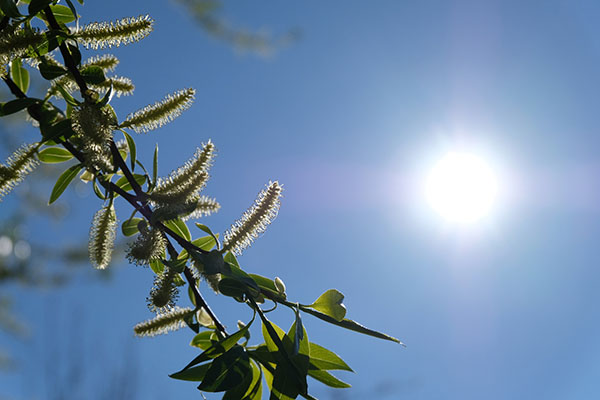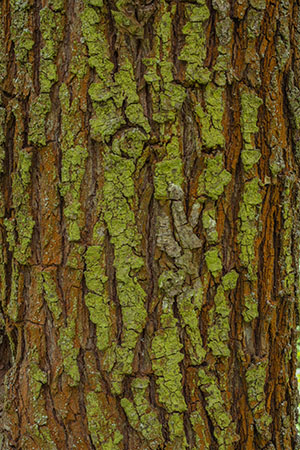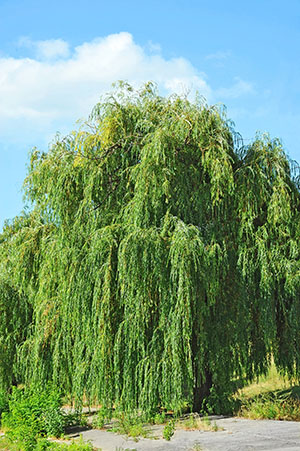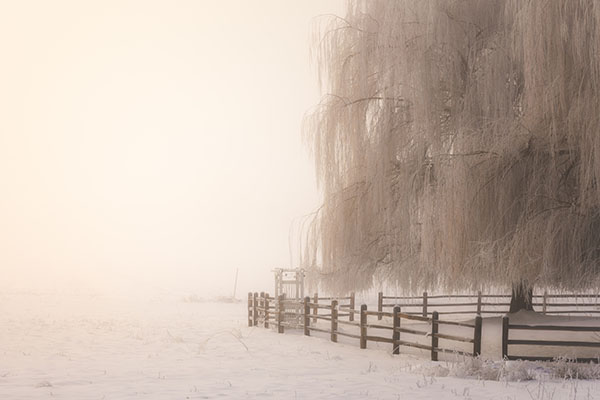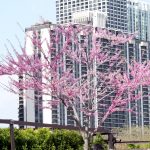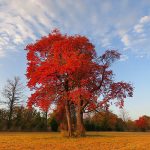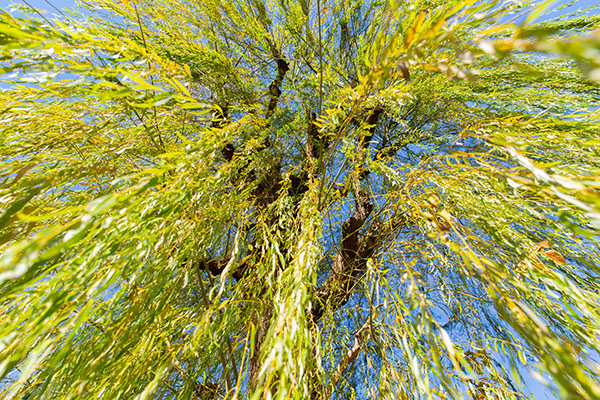
Willow trees add a striking and distinctive look to any Chicago landscape whether it’s summer, fall, winter or spring!
This week, we are picking back up with our series on the native trees of Chicagoland. We have so far covered the oak tree, dogwood, ash tree, and sassafras, and in this installment, we will cover the willow tree. Willow trees are among the most recognizable trees in the Chicago area with their long, drooping branches and distinct catkin flowers. There are over 400 species of willow trees, most of which are found in North America. This unique tree has been the subject of fascination since ancient times as willow trees are important symbols in the Bible, ancient Greek mythology, and Native American spirituality. Willow trees are also used to symbolize despair and mourning in two of Shakespeare’s most famous plays, Hamlet and Othello.
Willow trees are a favorite to include in yards and landscapes because of their natural beauty and ability to provide good shade. Their leaves and catkin flowers appear early in the spring and do not fall off until late in the fall. The elongated leaves of willow trees turn a brilliant golden color in the fall that really enhances the beauty of the tree. In this article, we will take a closer look at the physical characteristics of willow trees, some of the common species of willow trees, natural threats to these trees, and proper willow tree care.
The arborists of Hendricksen Tree Care are experts at providing tree care and can help you take care of the willow trees on your property. Our complete tree services include tree care and maintenance, tree pruning, and treatment for insect infestations and disease.
Characteristics of Willow Trees
The drooping, curved branches and elongated leaves of willow trees make them very easy to recognize compared to the other trees of the Chicago area. Willows can grow to be between 45 and 100 feet tall depending on the species, and they are dioecious which means that male flowers only grow on male trees and female flowers grow on female trees. The flowers of a willow tree are catkins which are cylinder shaped clusters that typically have no petals. The look of these flowers may vary between the different willow species.
The following are the most common characteristics of willow trees:
- Height: The different species of willow trees may vary in height and there are also willow shrubs that are much lower to the ground than the treespecies. Willow trees are typically around 45-50 feet on the smaller end and some can grow to be between 75 and 100 feet. These trees tend to be as wide as they are tall which is why they are commonly used as shade trees.
-
Leaves: The leaves of most willow species are shaped like elongated ovals and they usually have serrated edges. They grow in drooping clusters and last longer into the fall than the foliage on most other types of trees. Willow leaves are green during the summer and can turn greenish-yellow to gold in the fall.
- Flowers: The flowers of a willow tree are catkins which are cylindrical in shape and consist of many small flowers bunched up on a central stem. Male flowers can have 2 to 10 stamens and the anthers of the stamens are rose colored before blooming and orange or purple when in bloom. Female catkins also consist of clusters of smaller flowers around a central stem and a single ovary. They are typically greenish in color and do not appear hairy like male catkins. Willow catkins are generally pollinated by the wind.
- Bark and Branches: The bark of a willow tree tends to be furrowed and brown to yellowish brown in color. Willows have numerous drooping branches which is what gives them their distinct appearance.
Species of Willow Trees
While there are many species of willow trees found in Illinois, some of them are not native to the area. However, several of the non-native species of willow trees are among the most common in the area. The following are native and non-native willow trees found throughout the Chicago area:
Non-Native
-
White Willows: The white willow (Salix alba) is a medium sized willow tree native to Europe and parts of Asia. These trees get their name from the fine white hairs on the underside of the leaves that make them appear lighter in color than other types of willows. White willows are fast growing trees that can tolerate many different soil conditions, but they have weak branches that makes them vulnerable to storm damage and disease.
- Golden Weeping Willow: The golden weeping willow (Salix sepulcralis) is one of the most popular willow tree species. This willow is a hybrid of the alba “Vitellina” willow and the S. babylonica. It gets its name from the golden shoots that sprout gold to greenish yellow leaves that eventually turn olive green. Like the white willow, the golden weeping willow is highly tolerant of tough soil conditions and easily susceptible to storm damage.
Native
- Black Willow: The black willow (Salix nigra) is native to Illinois. This tree gets its name from its dark brown to black bark and it can grow anywhere from 35 to about 75 feet. The leaves of a black willow are dark green, and the catkins are greenish yellow to yellow in color. Black willows normally do not live longer than 40 or 50 years and they have brittle branches that break often and need regular pruning.
- Pussy Willow: The pussy willow (Salix discolor) is a native willow tree known for its furry, greyish catkins that flower early in the spring. This tree gets its name from its furry catkins because they have been thought to resemble small cats. The pussy willow is generally smaller than other willow trees (15-25 feet) and they may also appear as large shrubs (8-10 feet). These trees have a relatively short lifespan of 40 to 50 years.
- Prairie Willow: The prairie willow (Salix humilis) is a native willow shrub that typically grows between 4 and 6 feet tall. The branches of this shrub grow in dense thickets and spread out over time. The prairie willow prefers to grow in dry soil conditions and it attracts plenty of wildlife including rabbits, deer, and bees.
Threats to Willow Trees in Chicago: Insects and Diseases
Most species of willow trees are vulnerable to several types of diseases and pests. The following are the most common diseases and insects to cause harm to willow trees:
Disease
- Bacterial Twig Blight: This bacterial disease will cause the leaves of a willow tree to turn brown and wilt. The branches will die off once they become heavily affected. You can tell if a willow tree has this disease by checking for brown streaks in the wood. Spraying the tree with a fixed copper fungicide early in the spring and trimming infected twigs can help prevent the spread of this disease.
- Cytospora Canker: This disease results in cankers forming on the branches and trunk. Cankers appear as sunken and discolored areas that will grow slowly and eventually girdle the affected areas which can kill other portions of the tree. Most species of willows are vulnerable to these cankers, but the black willow is the most resilient.
- Fungal Issues: Willow trees may become affected by a range of fungal infections including leaf spots, rust, and powdery mildew. Each of these infections results in unsightly spots in the leaves that can eventually cause the leaves to die. A willow tree can experience defoliation in severe cases.
Insects:
- Aphids: Aphids are tiny insects that feed on the sap of various trees, including willow trees. Over time they will drain the tree of its juices which will severely weaken it and lead to damage or deformation.
- Spider Mites: Spider mites attack trees in large numbers and feed on the sap in the foliage. Leaves that are affected have a speckled appearance and they will die off if the damage from the spider mites is too much.
- Gypsy Moths: Gypsy moths lay large numbers of eggs on willow trees and the larvae that hatch constantly feed on the leaves of the tree until they reach their pupal stage. This can lead to serious defoliation.
- Carpenterworms: Carpenterworms are caterpillars that spend their larval stage boring into tree trunks and feeding on the materials inside the tree. This can lead to damaged branches that are at risk of falling off, and the girdling of nutrients which can cause parts of the tree to die.
Willow Tree Care Tips
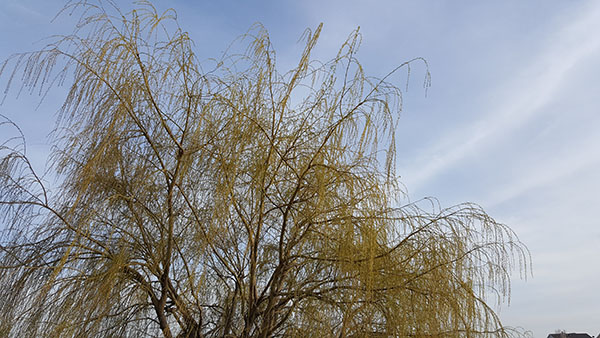
Willow trees handle wet soil quite well and are commonly seen along lakes and ponds throughout the Chicago suburbs such as Arlington Heights
Willow trees handle wet soil quite well and are commonly seen along lakes and ponds throughout the Chicago suburbs such as Arlington Heights
Providing good care to your willow trees will not only preserve their natural beauty, but also make them more resistant to the diseases and insects described above. Willow trees can survive in relatively harsh soil because of their strong root systems, but their branches are weak and vulnerable to damage. These tips will help you properly care for your willow trees so that they live a full and healthy life:
- Planting: Willow trees have big strong root systems that can spread far from the base of the tree. When planting a willow tree, make sure you plant it at least 50 feet away from underground lines for water, gas, or electricity. Most willow tree species grow about 8 feet per year so make sure you plant it in a spot where there is room for this rapid growth.
- Watering: Good watering can make a willow tree more resilient to diseases and insects. Most species of willow trees can handle moist soil and even some standing water. During the growing season, water willow trees regularly enough to keep the soil moist but be careful not to overdo it.
- Mulching: Putting a layer of mulch around a willow tree will help reduce moisture loss in the soil which will help other plants underneath the root system grow. The mulch should be 2-4 inches deep with 3-4 inches of space around the trunk.
- Pruning: The weak branches of willow trees can easily become damaged which makes them vulnerable to diseases. It is best to prune willow trees in the early spring or late winter to remove broken or diseased branches. If you do not feel comfortable pruning your willow trees, the experienced arborists of Hendricksen Tree Care can provide pruning services.
Weeping Willow Trees are easily recognizable and beautiful all year round throughout Illinois
Willow trees are among the most popular and easily recognized trees in the Chicago area. All species of willow trees are uniquely beautiful, and they provide excellent shade. Whether you have native willow trees in your yard or non-native willows that are found throughout Illinois, the tips in this guide should help you take proper care of them so they can better resist insects and disease.
If you need the assistance of professional arborists to prune your willow trees or provide treatment for insects or disease, contact Hendricksen Tree Care. We provide a range of tree care services including maintenance and pruning and we can diagnose problems caused by disease or insects. Hendricksen Tree Care is happy to help those in the north and northwest Chicago suburbs including Arlington Heights, Palatine, Northbrook, and Lake Zurich care for their willow trees.
Look for our next installment of our series about the native trees of Chicago.
